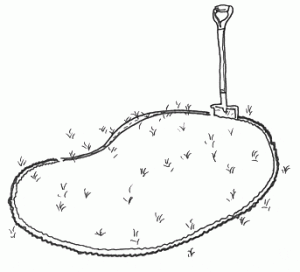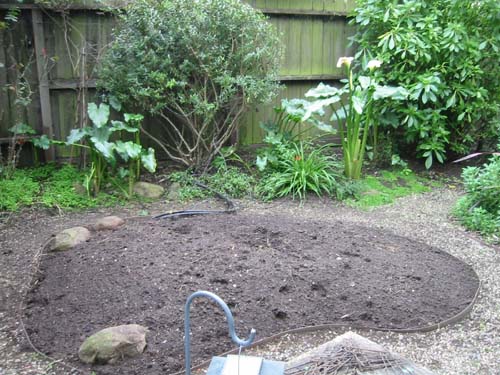Plant Once, Enjoy Forever
Perennial gardening is for everyone, everywhere! The beauty and ease of planting a perennial garden is not only gratifying aesthetically, it also save you money and time in the long run. If you haven’t cultivated perennials before, now is the perfect time to start!
To those of you that may not exactly be the dirt under the fingernails type, this is the perfect solution to beautifying your yard. Instead of wasting time and money every spring on annuals, you can dig that same hole ONCE and enjoy for years to come, without ever picking up your shovel again.
Too good to be true, well, perhaps. To have this sort of perennial garden, carefully planning and little leg work is required which you must commit to before just randomly planting things in your garden bed. A careful selection of plant cultivars, colors and sizes will assure you less maintenance and replacement of plants in the future. If you are one of those impulsive “But its so pretty right now that its blooming” people, perhaps perennial beds aren’t perfect for you (unless you go to the nursery every single week and plant something different every single week).
How to get started:
First, you’ll have to go out and scour your yard. Do you have any of these?
-An area that has been over run with shrubs and just needs a makeover
-An area along a fence line that makes you feel like you’re in a prison yard
-A boring lot line with to delineation between your neighbors yard and yours
-An area along the foundation of your home that seems bland
-A border of green shrubs that just kind of blends into the green background of your grass
-That infamous “area around my mailbox”
If you are guilty of any of these charges, a perennial garden will be your saving grace. Not only are perennials smaller holes to dig than filling your yard with large shrubs, they tend to be a bit cheaper AND bloom longer.
 Once you find that area, get out your pencil and paper and start planning. Careful attention should be taken to the size of the area and the other factors in the surrounding area such and canopy trees and utility lines. Both of these can put a kink in your perennial gardening hose down the line, so pay attention. Measure your lengths and depths and make a rough sketch of what the area looks like, don’t worry, you don’t have to be Picasso. Its not a contest.
Once you find that area, get out your pencil and paper and start planning. Careful attention should be taken to the size of the area and the other factors in the surrounding area such and canopy trees and utility lines. Both of these can put a kink in your perennial gardening hose down the line, so pay attention. Measure your lengths and depths and make a rough sketch of what the area looks like, don’t worry, you don’t have to be Picasso. Its not a contest.
Try to select an area of your yard that will be easily viewed from some of your favorite places, such as a sitting area in your home, a patio out back or even from the street to enhance curb appeal. There is no use taking the time and effort in beautifying an area that you’ll never see.
 Also, pay some mind into how easy it is for you to get water to it in the first year or so. Although once a perennial garden is established, depending on plant selection, they tend to be drought tolerant and low maintenance. The worst thing in the world you can do is take all kind of time money and effort into creating a masterpiece only to find that its a pain in the rear to keep watered. Instead of it being a place of beauty it will become a cumbersome nuisance worse than you started with. Soaker hoses do the trick if irrigation is not possible.
Also, pay some mind into how easy it is for you to get water to it in the first year or so. Although once a perennial garden is established, depending on plant selection, they tend to be drought tolerant and low maintenance. The worst thing in the world you can do is take all kind of time money and effort into creating a masterpiece only to find that its a pain in the rear to keep watered. Instead of it being a place of beauty it will become a cumbersome nuisance worse than you started with. Soaker hoses do the trick if irrigation is not possible.
Once you’re decided where, now comes the most exhaustive part of the project, bed preparation. There are several things that must be decided before you plant even the first flower in your new bed such as:
Does the bed have to be tilled or amendments constituted?
Do you want to use a rigid edging such as rubber or metal, or go with a less formal cut bed line?
Do you want to use mulch, pine needles or decorative rocks for soil dressing?
Are there any other hardscape elements that will be incorporated into the bed such as a fountain, pond or birdbath in the future?
How large of a perennial bed are you really wanting to be responsible for?
A great way to get a gauge of your new bed line is to get out a good old garden hose and play with different bedline ideas. Are curves your style or are you more of a Charlestonian straight line garden type of person? Do you want a peninsula type bed or something shaped like a kidney bean.
Once your bed line is decided, if its not already decided for you the next step is to get rid of any undesirable plant material that may already be residing there. Shrubs should be ripped out and roots removed to the best of your ability. If it was an existant area of turf, Herbicide should be used to kill of anything and create a clean slate before tilling up your new area. Use caution as to which herbicides you use to kill off vegetation, some of them stay in the soil longer than you will be willing to wait. A garden center employee will be willing to help you select the perfect solution to your vegetation problem.
Tilling is an optional step, you can rent one and really break up your soil, but its not necessary in all circumstances. You can achieve gardening success but just amending and breaking up the soil around the particular plants you are wanting to grown. Either way, its your decision to make. Caution to those who do till the entire garden: To save money, don’t amend the entire bed with rich compost, only amend the holes you dig (refer to our “How To Plant” guide on our resources tab). This will save you time and money!
That seems like enough work to get you started!
Perennial garden is incredibly rewarding, almost like raising a child. You get to watch small plants count on you for nourishment and care and before you know it, there they are, blooming and being outstanding all on their own and all you have to do is sit back and take pride. Its really quite simple if you take a little time from the beginning.
The next part in our series will focus on plant selections, including color and texture selection.






